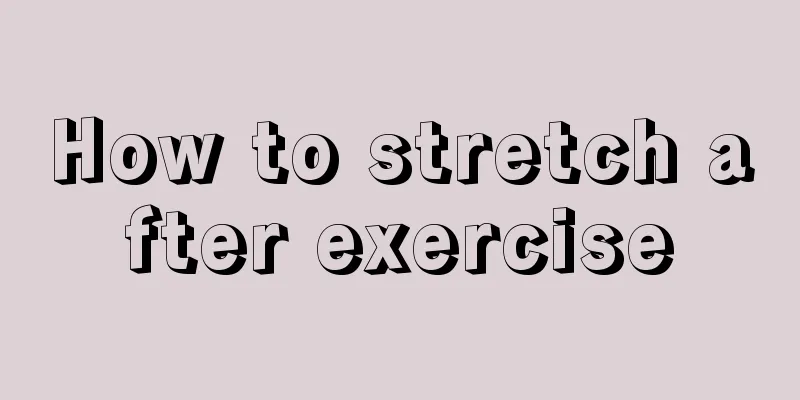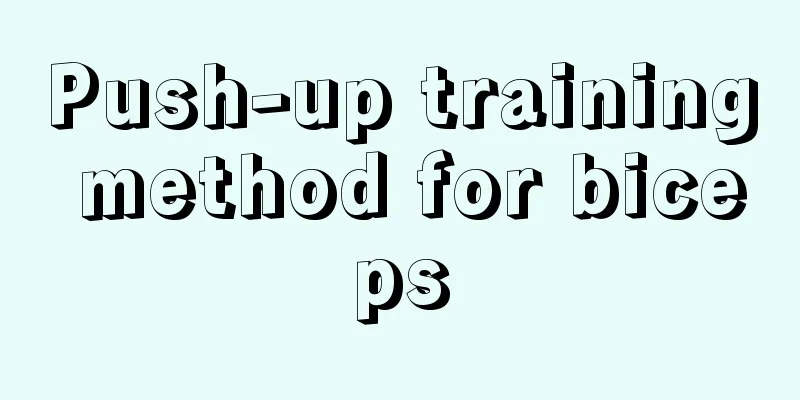What are the precautions for traction health exercises?

|
Traction is a method to treat diseases, but traction can be studied as a health exercise. Traction health exercises can also treat diseases and have a good health-care effect. Traction can treat cervical spine diseases. Patients should pay attention to methods and techniques when exercising to avoid errors in exercise methods, which will hinder treatment and make the disease more severe or change. So what are the precautions for traction health exercises? The matters are as follows: Traction force: The purpose of traction force is to increase the intervertebral space of the cervical vertebra without causing muscle and joint damage. Generally speaking, the weight is 2~3kg when sitting and about 10kg when lying down. Traction time: generally 15 to 20 minutes. Exercising for too long can easily cause static injuries to muscles and ligaments. Body position: Commonly used body positions are sitting and supine. The supine position can make the posterior part of the C4~C7 intervertebral space widen more significantly, and the angle is also easier to adjust. The sitting traction position is not easy to stabilize and the angle change is small, but it is relatively easy to operate. Traction mode: can be divided into continuous traction and intermittent traction. Continuous traction maintains traction throughout the entire process; intermittent traction reduces traction several times during the traction process. Older people or those with more serious illnesses tend to choose the latter. Precautions (1) When pulling, the front part of the anti-tie should be placed on the lower jaw (commonly known as the "chinbone") and should not slide towards the front of the neck and throat to avoid suffocation. Especially when the patient has weakness in both upper limbs, a family member should be at home to supervise each traction, because once the pillow tie slides toward the throat, the patient will be unable to adjust the position by himself. (2) When traction is performed, it is not necessary to force the head and neck to a specific position. It is best to use a position that allows the patient to feel that their symptoms are alleviated. Generally speaking, experts recommend that the patient's head and neck should be tilted forward about 20 degrees during traction. , because the widening of the intervertebral space is most obvious at this position. For some patients, the effect of traction in neutral neck (commonly known as head and neck straight) is not obvious, so head and neck forward tilt (flexion) 20 is used instead. The symptoms were quickly improved. (3) Patients with mild symptoms should receive intermittent traction, 1 to 3 times a day, each time for 30 minutes. Patients with severe symptoms can receive continuous traction, 6 to 8 hours a day. The traction weight can start from 3~4 kg, gradually increase to 5~6 kg, and not exceed 10 kg. During the first few days of traction treatment, a small number of patients may experience dizziness, headache, or neck and back fatigue, which is especially likely to occur in patients with sympathetic nervous system and vertebral artery type cervical spondylosis. In this case, traction should be started with a small weight and a short time, and then the traction weight and time should be gradually increased according to the patient's specific situation. Some patients cannot tolerate traction therapy and should use other treatment methods instead. In a few lame people, the symptoms are aggravated after traction. This may be because traction aggravates the stimulation or compression of the nerves or blood vessels. Traction should be stopped. What are the precautions for traction health exercises? People with cervical spondylosis should pay attention to this set of health exercises and carry out reasonable treatment and conditioning. The cervical spine is an extremely important part of the body. After the disease, the movement of the neck is restricted, which will affect the brain, shoulders and other parts, and life will also be restricted. Therefore, when understanding traction exercises, you must pay attention to your physical condition. A professional doctor will determine the exercise method after examination, and the steps and movements must be normal. |
<<: What are the movements of full body health exercises?
>>: How to exercise muscles throughout the body
Recommend
The fastest way to reduce thigh fat
For many office workers, long hours of sitting at...
What is aerobic dance
Now people's lives are getting better and bet...
Things to note for spring outings
Spring is here again, and I believe many people a...
How to massage your baby before swimming?
There are swimming pools in many places in the ci...
How many jumps can help you lose weight?
Skipping rope is a very good exercise for weight ...
How do you train your abdominal muscles?
Muscles are a very important part of the body. Th...
Can I gain weight by exercising regularly?
Compared to the increasing number of people who h...
Basic home-based slimming yoga practice
Everyone hopes to have a healthy body, and health...
Ten things to note when wearing knee pads for mountaineering: Rushing downhill is the most fatal to the knees
In outdoor sports, especially mountain climbing, ...
What are the methods for students to lose weight?
Many students are confused and do not have time t...
How to exercise muscle men
For male friends, having a body of toned muscles ...
What are the effects of abdominal muscle training
The abdominal muscles are one of the many muscles...
How to do basic yoga before bed
In life, we may not have so much time to exercise...
How long does running take to slim down your legs?
How long does it take to run to lose weight in yo...
How to do aerobics for middle school students
With the faster and faster development of today&#...









